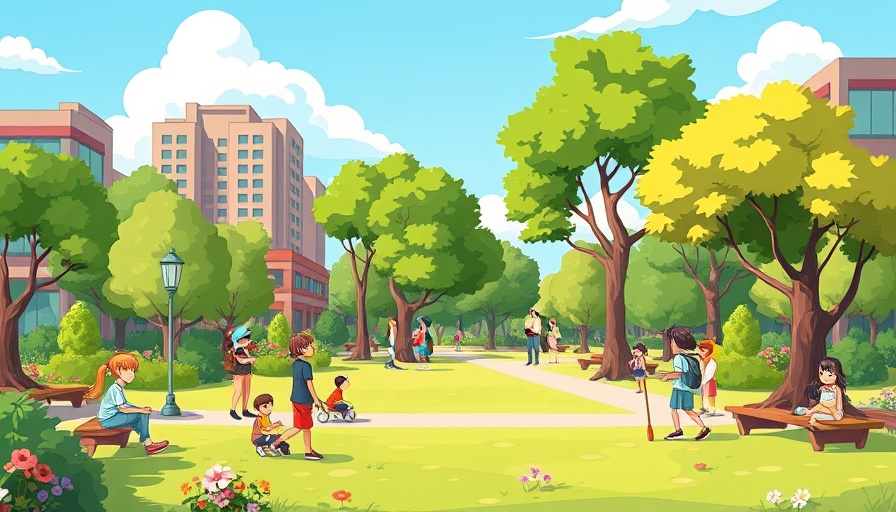
Why Investing in Green Space is Essential for Communities
The TurfMutt Foundation emphasizes the importance of investing in green space, urging communities to prioritize the health and overall well-being of their residents. The growing trend of transferring indoor activities outdoors, termed "backyarding," represents a cultural shift that enhances public interaction with nature.
Kris Kiser, President & CEO of the TurfMutt Foundation, states that cities are beginning to follow this trend by investing in parks and green spaces that cater to community needs. He cites Louisville as a model for successful urban greening, where projects such as the TurfMutt Great Lawn and Mulligan’s Bark Park enhance the quality of life for residents, proving that urban spaces can function as vital extensions of home.
The Health Benefits of Urban Green Spaces
Numerous studies support the health advantages of urban green spaces. A USDA research project highlighted a correlation between access to green areas and reduced mortality rates, decreased heart rate, and lower instances of violence. For community residents, regular visits to parks can significantly reduce reliance on medications for anxiety, depression, and various physical health issues, as noted by the Finnish Institute for Health and Welfare.
Moreover, just a short 21-minute visit to a park can lower cortisol levels, marking a notable decrease in stress. These findings underline how vital greenery is not only for physical health but also for mental well-being, particularly for vulnerable populations such as children and teenagers, who thrive in environments enriched with nature.
Environmental Impact: More Than Just Aesthetic
The environmental advantages of investing in urban green spaces are equally impressive. Green landscapes mitigate urban heat islands, decrease stormwater runoff, and enhance air quality, making cities not only more livable but sustainable. Communities creatively enhancing their landscapes are already making a difference: initiatives like Boston's green roofs and Detroit’s revitalization of neglected alleys show innovative approaches to integrating nature within urban infrastructures.
As cities grow, strategies that increase tree coverage can significantly benefit residents. A European study demonstrated that a 30% increase in urban tree canopy can decrease summer temperatures by up to 32 degrees, showcasing how greenery acts as a natural cooling agent.
The Growing Trend of 'Public Backyarding'
Embracing the concept of 'public backyarding' allows communities to transform mundane city scapes into vibrant, green areas that invite social interaction. This phenomenon not only beautifies neighborhoods but fosters a sense of community. The TurfMutt Foundation’s advocacy for urban green spaces urges leaders to recognize these benefits and invest accordingly.
Encouragingly, more municipalities around the United States are taking up the mantle as stewards of greenery. From small pocket parks in New York to expansive urban parks that mirror nature’s tranquility, the shift towards enhancing public spaces reflects a critical understanding of what residents truly need.
Take Action for Your Community
The case for investing in green spaces is strong, and it’s essential for local leaders, homeowners, and business owners to consider the long-term benefits. As community members become increasingly aware of the advantages that green spaces bring, there is a greater push to advocate for policies that prioritize urban greening. The TurfMutt Foundation’s insights can serve as a guide for those looking to enhance their community’s landscape—leading to healthier, happier residents and a more sustainable environment.
Now is the time to get involved and support initiatives that bring nature into our cities. The health, wellness, and environmental benefits are far too significant to overlook.
 Add Row
Add Row  Add
Add 




 Add Row
Add Row  Add
Add 

Write A Comment